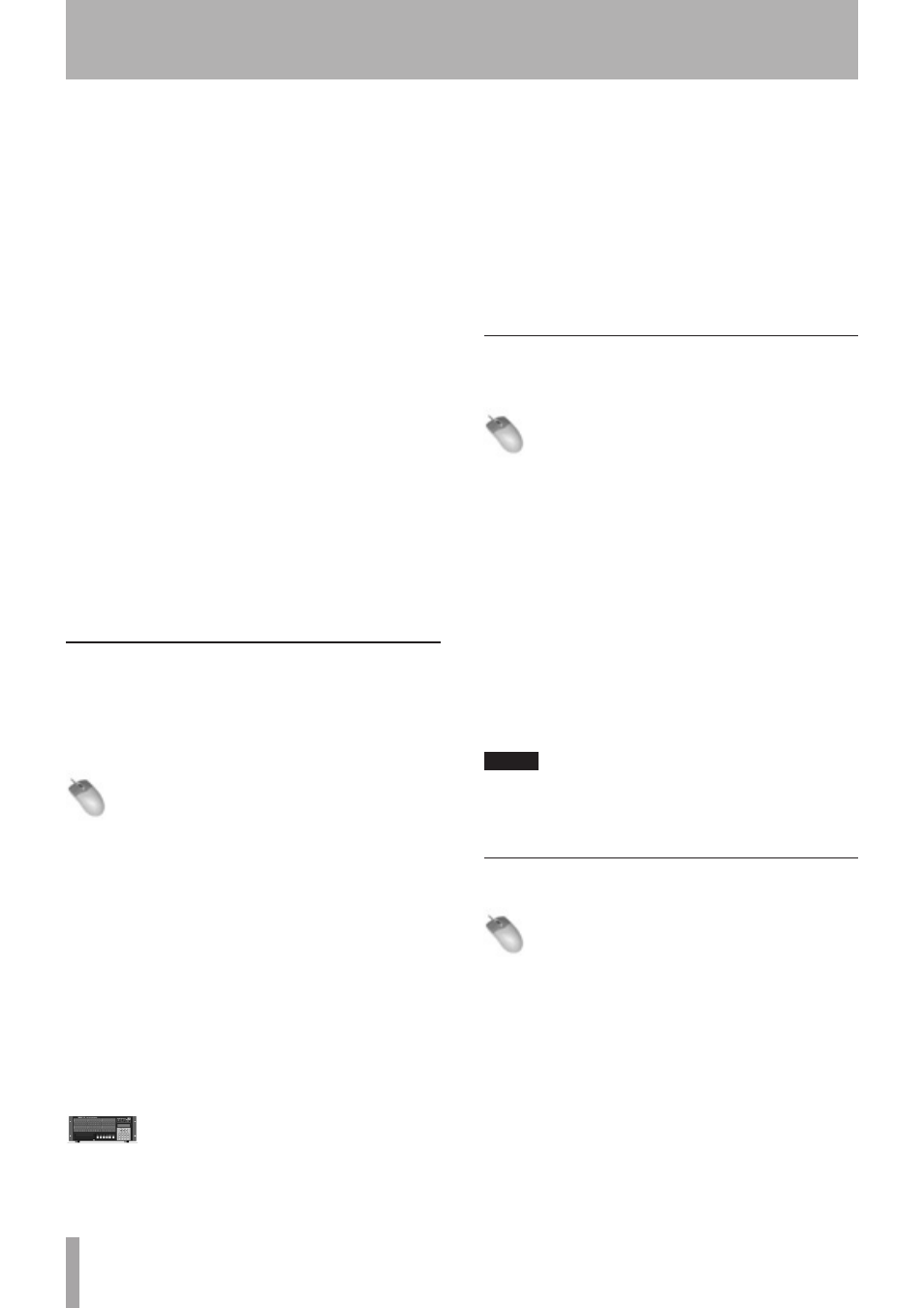Copying a project, Backing up a project to cd/dvd, Deleting a project – Teac X-48MKII User Manual
Page 28: 5 – recorder

28
TASCAM X-48MKII
3 You can navigate up to select another drive. Click
Save to export the project.
Exporting as an AAF file
8
When exporting as an AAF file, you can export as an
embedded or non-embedded file. When you choose
the File menu “Export Project...” item the export screen
appears. On this screen, you can set whether to export
an embedded AAF file or a non-embedded AAF file. The
difference between embedded and non-embedded files
is explained below.
Embedded AAF files contain all the information and
•
audio files for a project. In other words, the entire
project can be stored in a single embedded AAF file
(.aaf). The maximum size of a single AAF file, however,
cannot exceed 2 GB. For this reason, if the total data
of the project exceeds 2 GB (because it has many
tracks and/or very long clips), you must export it as
a non-embedded AAF. If you try to export a project
that is larger than 2 GB as an embedded AAF, an error
message will appear and exporting will be canceled.
Non-embedded AAF files only contain the project
•
information. When you export this way, a folder that
contains all the audio files will also be created. As with
embedded AAF files, the maximum size is 2 GB, but this
limitation has no practical effect since non-embedded
AAF files do not contain audio files.
Copying a Project
You can make a copy of a project with the X-48MKII, for
instance as a backup to another drive. This copies the
project and all of its wave recordings, unlike Save As...
which only copies the project file.
Mouse/Keyboard Operation
1 Click on the File menu and select File Manager or
press Ctrl-F on the keyboard.
2 You should see the File Manager window with two
panes on the left and right. In the left hand pane,
navigate to the project folder you want to copy
(containing the .ndr file and Audio folder). Click on
this folder so it’s highlighted.
3 Using the controls on the right side, navigate
to where you want to copy the project to, i.e. a
removable eSATA hard drive.
4 When you’re ready to begin copying, press the
>> button under the word Copy between the two
panes.
Front Panel Operation
1 On the front panel of the X-48MKII, press the PROJ
button, press the
5
/
b
arrows to select
Copy
and
press CHNG.
2 Press the
5
/
b
arrows until you select a source
project folder and press ENTER.
3 Press the
5
/
b
arrows and select a project file (.ndr
file) and press ENTER.
4 Press the
5
/
b
arrows and select a destination
drive and press ENTER.
5 Enter a destination project name by using
5
/
b
arrows and CHNG button, and press ENTER.
For details about how to copy projects in a connected
network, see “Networking” on page 22.
Backing Up a Project to CD/DVD
Use the built-in DVD drive to make a backup.
Mouse/Keyboard Operation (only)
1 Click on the File menu and select File Manager or
press Control-F on the keyboard.
2 You should see the File Manager window with two
panes on the left and right. In the left hand pane,
navigate to the project folder you want to back up
(containing the .ndr file and Audio folder). Click on
this folder so it is highlighted.
3 In the center pane, click the Backup button.
4 The Burn Options window should appear. It will tell
you how large the project folder you selected is,
and will give you the option to burn the project
to a 650MB CD , 700MB CD or 4.7GB DVD. You can also
click a checkbox to verify the disk after it has been
burned.
NOTE
Backups can only be made using the built-in DVD drive
•
or a different hard disk.
Only one project can be backed up at a time.
•
Deleting a Project
Mouse/Keyboard Operation
1 Click on the File menu and select File Manager or
press Control-F on the keyboard.
2 You should see the File Manager window with two
panes on the left and right. In the left hand pane,
navigate to the project folder you want to delete
(containing the .ndr file and Audio folder). Click on
this folder so it’s highlighted.
3 In the center pane, click the Delete button.
4 In the Confirm Delete window that opens, click OK.
5 – Recorder
